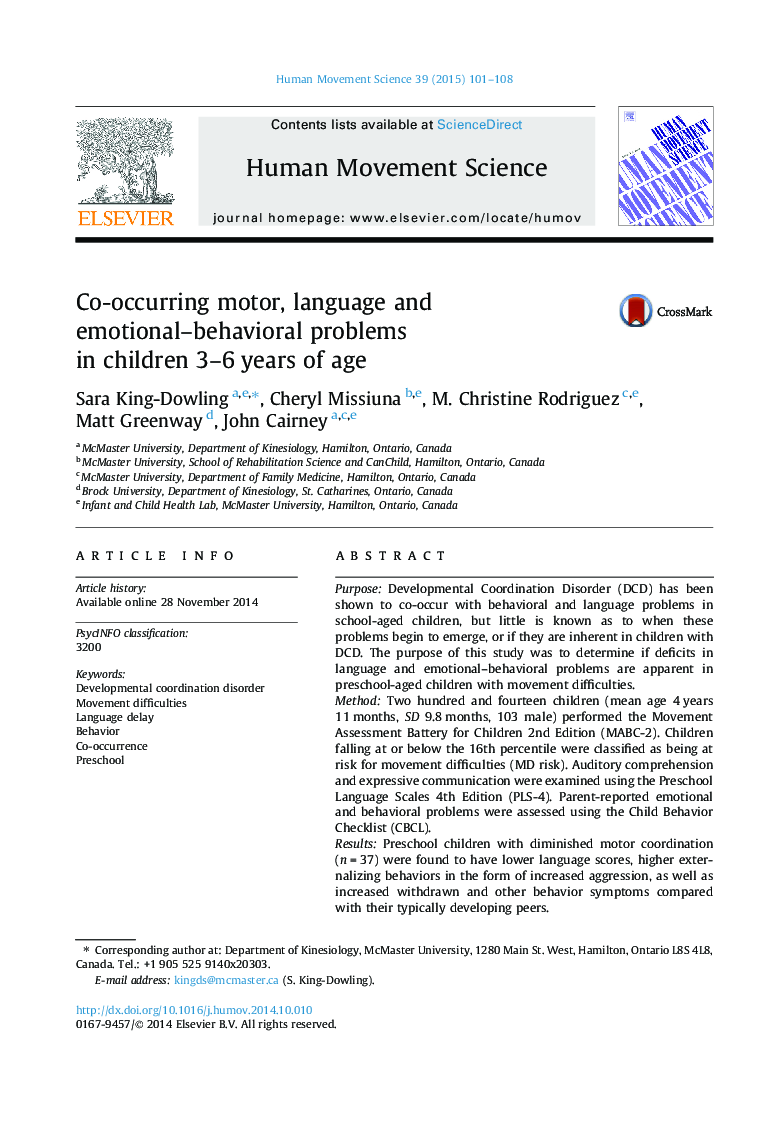| Article ID | Journal | Published Year | Pages | File Type |
|---|---|---|---|---|
| 928292 | Human Movement Science | 2015 | 8 Pages |
•We examined motor, language and behavioral development in a sample of children 3 to 6 years of age.•Motor coordination problems co-occur with lower language scores.•Motor coordination problems co-occur with increased aggression and withdrawal behaviors.•These co-occurring problems in children as young as 3 highlights the need for early intervention.
PurposeDevelopmental Coordination Disorder (DCD) has been shown to co-occur with behavioral and language problems in school-aged children, but little is known as to when these problems begin to emerge, or if they are inherent in children with DCD. The purpose of this study was to determine if deficits in language and emotional–behavioral problems are apparent in preschool-aged children with movement difficulties.MethodTwo hundred and fourteen children (mean age 4 years 11 months, SD 9.8 months, 103 male) performed the Movement Assessment Battery for Children 2nd Edition (MABC-2). Children falling at or below the 16th percentile were classified as being at risk for movement difficulties (MD risk). Auditory comprehension and expressive communication were examined using the Preschool Language Scales 4th Edition (PLS-4). Parent-reported emotional and behavioral problems were assessed using the Child Behavior Checklist (CBCL).ResultsPreschool children with diminished motor coordination (n = 37) were found to have lower language scores, higher externalizing behaviors in the form of increased aggression, as well as increased withdrawn and other behavior symptoms compared with their typically developing peers.ConclusionsMotor coordination, language and emotional–behavioral difficulties tend to co-occur in young children aged 3–6 years. These results highlight the need for early intervention.
